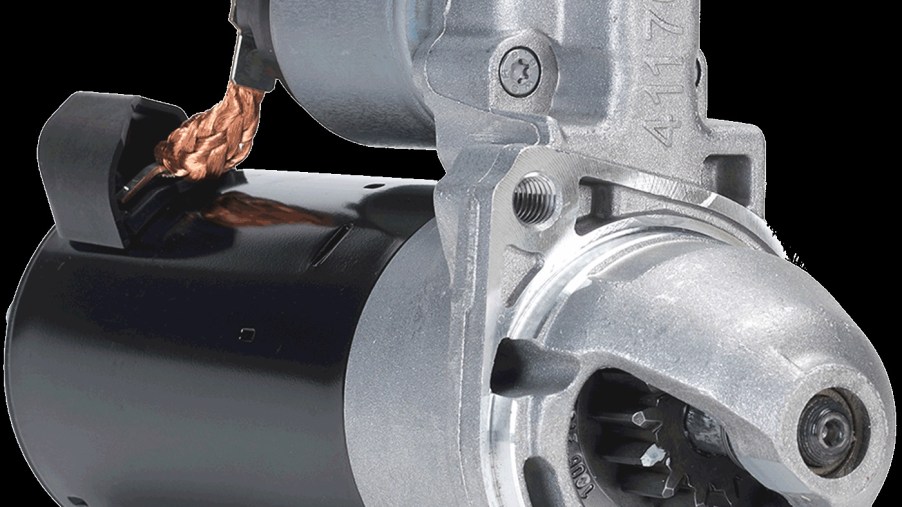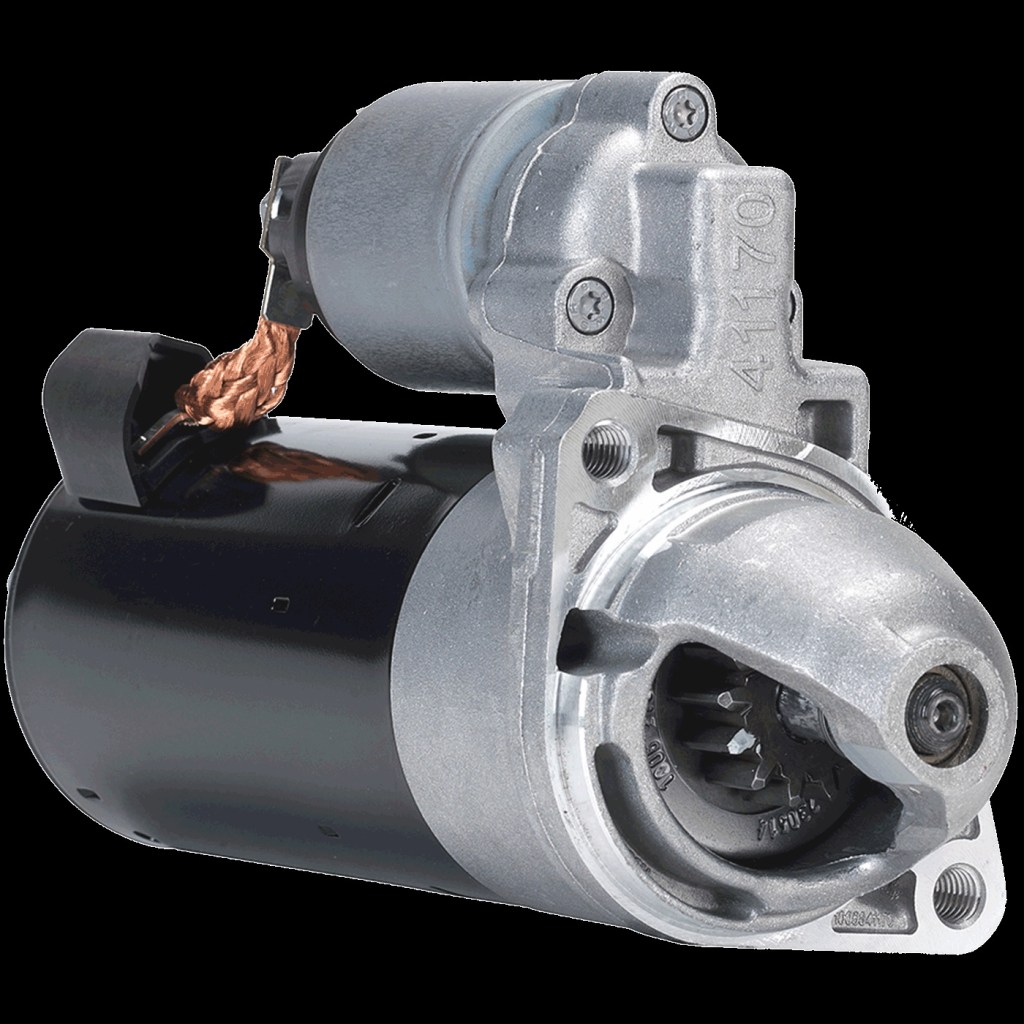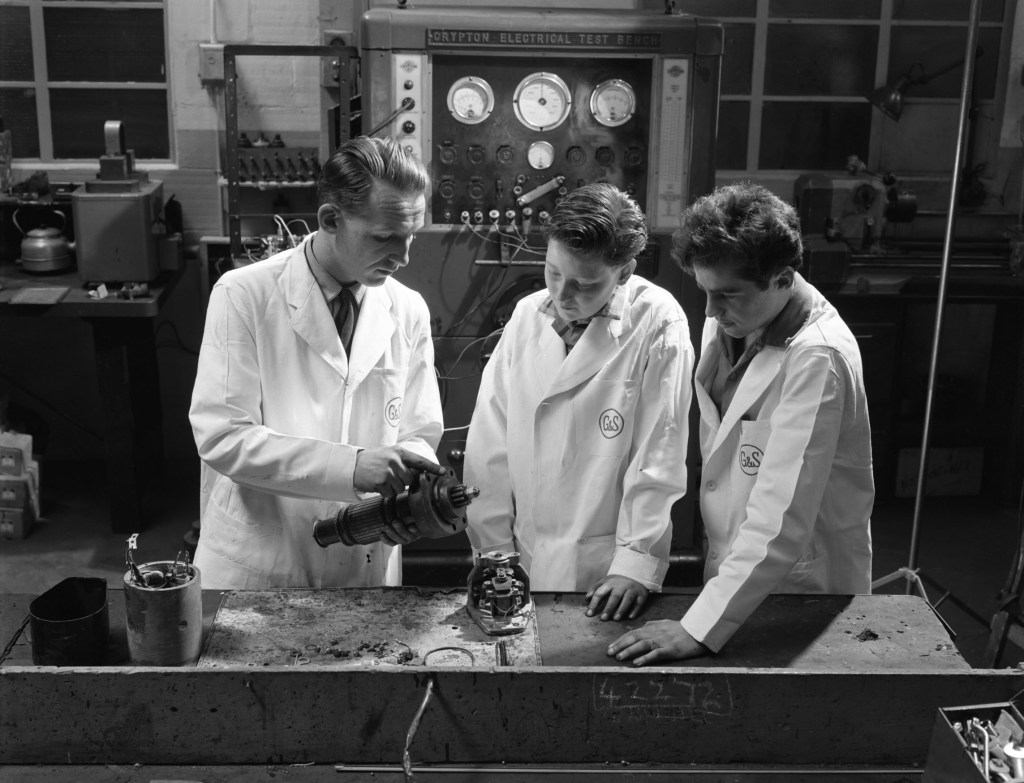
Is Your Car’s Starter Motor Going Bad?
It’s sometimes overlooked, but your vehicle’s ignition system also needs maintenance now and again. Usually, that means replacing the spark plugs or the ignition coils. However, occasionally, other parts start to fail. For example, your car’s starter motor. Luckily, catching it isn’t necessarily difficult.
How does a car starter motor work?

The earliest cars didn’t use a starter motor or ‘starter’ as it’s sometimes known. Instead, you manually crank the engine to life, Car and Driver and 1AAuto explain. And even after starters began appearing in cars, many motorcycles kept using kickstarters. Today, though, regardless of what kind of car you drive, it has an electric starter motor.
The part’s name essentially says it all. The starter motor in your car is indeed an electric motor, Haynes explains, one that’s connected to the engine’s flywheel. When you turn the ignition key or press the start button, power flows from the car battery to the spark plugs and the starter. Or, more specifically, it flows to the spark plugs and a magnetic switch known as a starter solenoid, aka a starter relay, Autoblog explains.
The starter solenoid is usually part of the entire starter motor assembly and functions similar to an electromagnet. When the solenoid is energized, a magnetic current is generated inside, which causes a metal armature to move. This connects some electrical contacts and lets power flow into the starter motor itself, Autoblog and Haynes explain.
More specifically, into the motor and a gear-linkage assembly that lets the motor engage with the flywheel. That’s what lets the starter motor turn the flywheel and start the engine. And once the engine’s running, the starter motor disengages from the flywheel, otherwise, it’d spin too fast and break, Autoblog explains.
What are the symptoms of a bad or failing starter motor?
Several issues can lead to odd noises coming from your engine bay. And a failing starter motor is one of them. A tell-tale sign of a bad starter is hearing a “grinding noise” when you’re trying to start your car, Autoblog reports. And if the issue is a failing starter solenoid, you’ll hear a “clicking noise” instead, Autoblog reports. The Drive describes it as “similar to a light knock.”
However, these aren’t the only symptoms of a failing starter motor or solenoid. Other signs include an inability or intermittent ability to start, hearing the starter engage but not spin the flywheel, and smelling or seeing smoke. You may also hear the starter spin even after the engine’s running, Exminster Garage reports.
It’s worth pointing out that some starting issues can be traced to a dead battery. But there’s an easy way to rule it out. If you can turn on the lights but not the engine, or can’t start the engine after a jump, you’ve got a bad starter, Firestone explains. Sometimes tapping the starter motor can get it going. But you have to do that constantly, it’s time to replace it.
How much does it cost to replace it?

Starter motors don’t have a set lifespan, Autoblog reports. Some fail quickly, others last for years. But at some point, they do fail and need to be replaced.
Theoretically, you can replace your starter motor and/or solenoid yourself, AutoZone reports. The motor’s location is vehicle-dependent, but the overall process is relatively straightforward. After disconnecting the battery and raising the vehicle, you simply unbolt the starter motor from its mounting point and remove any connecting wires, 2CarPros explains. Then you simply install the new motor and reverse the process.
Complete starters aren’t necessarily expensive. For example, I can get a starter for my 1999 Mazda Miata for less than $100 on RockAuto. And it’s possible to refurbish old motors with new components, including new solenoids. Naturally, though, if you don’t feel confident in DIYing the repair, you’ll have to pay labor fees, too.
Follow more updates from MotorBiscuit on our Facebook page.


